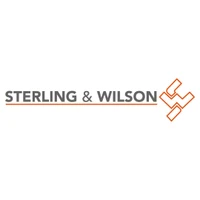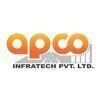


i
Sterling &
Wilson
Work with us
![]()
Proud winner of ABECA 2025 - AmbitionBox Employee Choice Awards
Filter interviews by
Sterling & Wilson Project Manager Interview Questions and Answers
9 Interview questions
Chilled water pipe size requirements depend on flow rate, pressure drop, material, insulation, and system design.
Flow rate: Determine the required flow rate of chilled water in the system.
Pressure drop: Calculate the pressure drop to ensure efficient operation.
Material: Select appropriate pipe material based on temperature and pressure requirements.
Insulation: Insulate the pipes to prevent heat gain or loss.
System...
Primary pump is the main pump responsible for the majority of the pumping work, while secondary pump is a backup pump used in case the primary pump fails.
Primary pump is the main pump in a system, while secondary pump is a backup pump.
Primary pump is responsible for the majority of the pumping work, while secondary pump is used only when needed.
Examples: In a heating system, the primary pump circulates hot water t...
Pump head loss calculation parameters include friction loss, elevation change, velocity head, and fittings.
Friction loss due to pipe roughness
Elevation change between inlet and outlet
Velocity head due to fluid velocity
Losses from fittings like elbows, tees, and valves
Centrifugal blowers are commonly used in AHUs for their efficiency and ability to handle high volumes of air.
Centrifugal blowers are preferred for AHUs due to their ability to handle high volumes of air efficiently.
They are more energy efficient compared to other types of blowers.
Examples of centrifugal blowers commonly used in AHUs include forward curved, backward inclined, and airfoil designs.
AHU components refer to the various parts of an Air Handling Unit that work together to regulate and circulate air in a building.
Filters - to remove dust and particles from the air
Coils - for heating or cooling the air
Fans - to circulate the air
Dampers - to control the flow of air
Humidifiers/dehumidifiers - to adjust the humidity levels
Types of pumps include centrifugal pumps, reciprocating pumps, and rotary pumps.
Centrifugal pumps use centrifugal force to move fluid through a system.
Reciprocating pumps use a piston or diaphragm to create pressure and move fluid.
Rotary pumps use rotating mechanisms to transfer fluid.
Other types of pumps include gear pumps, peristaltic pumps, and vane pumps.
The refrigeration cycle is a process that removes heat from a space and transfers it to the external environment.
The refrigeration cycle consists of four main components: compressor, condenser, expansion valve, and evaporator.
The compressor compresses the refrigerant gas, raising its temperature and pressure.
The high-pressure refrigerant then flows to the condenser, where it releases heat to the surroundings and c...
A chilled water system is a cooling system that uses chilled water to remove heat from a building or process.
Chilled water systems use water as a cooling medium.
They typically consist of a chiller, chilled water pumps, and a distribution system.
Chilled water is circulated through coils or heat exchangers to cool air or equipment.
Chilled water systems are commonly used in large commercial buildings, data centers, a...
The chiller connection refers to the method by which a chiller unit is connected to a building's HVAC system.
Chiller connection typically involves piping to transport chilled water from the chiller to the building's air handling units.
The connection may also include electrical wiring for power supply and control signals.
Proper chiller connection is crucial for efficient cooling and proper functioning of the HVAC s...
Sterling & Wilson Project Manager Interview Experiences
3 interviews found
I applied via Recruitment Consulltant and was interviewed in Sep 2024. There was 1 interview round.
(7 Questions)
- Q1. What are the Pump head loss calculation parameters
- Ans.
Pump head loss calculation parameters include friction loss, elevation change, velocity head, and fittings.
Friction loss due to pipe roughness
Elevation change between inlet and outlet
Velocity head due to fluid velocity
Losses from fittings like elbows, tees, and valves
- Q2. What is the AHU components
- Ans.
AHU components refer to the various parts of an Air Handling Unit that work together to regulate and circulate air in a building.
Filters - to remove dust and particles from the air
Coils - for heating or cooling the air
Fans - to circulate the air
Dampers - to control the flow of air
Humidifiers/dehumidifiers - to adjust the humidity levels
- Q3. Which type of blowers are use in AHU
- Ans.
Centrifugal blowers are commonly used in AHUs for their efficiency and ability to handle high volumes of air.
Centrifugal blowers are preferred for AHUs due to their ability to handle high volumes of air efficiently.
They are more energy efficient compared to other types of blowers.
Examples of centrifugal blowers commonly used in AHUs include forward curved, backward inclined, and airfoil designs.
- Q4. What is the difference between primary pump or secondary pump
- Ans.
Primary pump is the main pump responsible for the majority of the pumping work, while secondary pump is a backup pump used in case the primary pump fails.
Primary pump is the main pump in a system, while secondary pump is a backup pump.
Primary pump is responsible for the majority of the pumping work, while secondary pump is used only when needed.
Examples: In a heating system, the primary pump circulates hot water throug...
- Q5. What is the AHU valve conection
- Ans.
AHU valve connection refers to the connection of valves in an air handling unit for controlling the flow of air.
AHU valve connection is essential for regulating the flow of air in an air handling unit.
Valves are typically connected to the AHU ductwork to control the amount of air entering or exiting the unit.
Properly connected valves ensure efficient operation of the AHU system.
Examples of AHU valves include damper val...
- Q6. What things are required in chilled water pipe size
- Ans.
Chilled water pipe size requirements depend on flow rate, pressure drop, material, insulation, and system design.
Flow rate: Determine the required flow rate of chilled water in the system.
Pressure drop: Calculate the pressure drop to ensure efficient operation.
Material: Select appropriate pipe material based on temperature and pressure requirements.
Insulation: Insulate the pipes to prevent heat gain or loss.
System desi...
- Q7. What is the chiller conection
- Ans.
The chiller connection refers to the method by which a chiller unit is connected to a building's HVAC system.
Chiller connection typically involves piping to transport chilled water from the chiller to the building's air handling units.
The connection may also include electrical wiring for power supply and control signals.
Proper chiller connection is crucial for efficient cooling and proper functioning of the HVAC system...
Interview Preparation Tips
- prepare in HVAC chiller system
I appeared for an interview in Jan 2025, where I was asked the following questions.
- Q1. Describe yourself
- Ans.
I am a results-driven Project Manager with a passion for leading teams and delivering successful projects on time and within budget.
Strong leadership skills: Led a team of 10 in a software development project that increased efficiency by 30%.
Excellent communication: Regularly liaised with stakeholders to ensure project alignment and address concerns promptly.
Proficient in Agile methodologies: Successfully implemented S...
- Q2. Technical discussion
Interview Preparation Tips
I applied via Approached by Company and was interviewed before Feb 2022. There were 2 interview rounds.

(3 Questions)
- Q1. What is refrigeration cycle? Commissioning stages of Data center?
- Ans.
The refrigeration cycle is a process that removes heat from a space and transfers it to the external environment.
The refrigeration cycle consists of four main components: compressor, condenser, expansion valve, and evaporator.
The compressor compresses the refrigerant gas, raising its temperature and pressure.
The high-pressure refrigerant then flows to the condenser, where it releases heat to the surroundings and conden...
- Q2. What is chilled water system? Types of ac system?
- Ans.
A chilled water system is a cooling system that uses chilled water to remove heat from a building or process.
Chilled water systems use water as a cooling medium.
They typically consist of a chiller, chilled water pumps, and a distribution system.
Chilled water is circulated through coils or heat exchangers to cool air or equipment.
Chilled water systems are commonly used in large commercial buildings, data centers, and in...
- Q3. Types of pumps? Types of compressor
- Ans.
Types of pumps include centrifugal pumps, reciprocating pumps, and rotary pumps.
Centrifugal pumps use centrifugal force to move fluid through a system.
Reciprocating pumps use a piston or diaphragm to create pressure and move fluid.
Rotary pumps use rotating mechanisms to transfer fluid.
Other types of pumps include gear pumps, peristaltic pumps, and vane pumps.
Interview Preparation Tips
Study the jd
Introduce yourself in a good way
Dont use extra pause during explanation.
Should be well dressed
Use the language in whic you are comfortable
Skills evaluated in this interview
Top trending discussions






Interview questions from similar companies

I applied via Recruitment Consultant and was interviewed before Mar 2020. There were 4 interview rounds.
Interview Questionnaire
1 Question
- Q1. General project management questions
Interview Preparation Tips

I applied via Approached by Company and was interviewed before May 2021. There were 2 interview rounds.
(1 Question)
- Q1. Asked me to brief about me.He will test English speaking ability.
- Ans. I breifed about my qualification and experience.speak only English.
Online meeting conducted with me.About 4 to 5 people along with HR had a discussion with me.Asked questions regarding my work exposure and technical questions.
Interview Preparation Tips

I applied via Naukri.com and was interviewed in Oct 2020. There were 4 interview rounds.
Interview Questionnaire
3 Questions
- Q1. Two valuable contributions made by you on project.
- Q2. One failure contributed by you on project.
- Q3. What way you will be beneficial to new organisation.
Interview Preparation Tips

(1 Question)
- Q1. 1. What is your current role 2. Industry details

Project Manager Interview Questions & Answers
Afcons Infrastructureposted on 20 Aug 2023
I applied via Naukri.com and was interviewed before Aug 2022. There were 4 interview rounds.

Three people involved in the group discussion interview. After verifying my CV started questioning on different projects role.
(1 Question)
- Q1. Asked technical questions related to project manager. How you control the project? What were your strengths and weaknesses? Asked about segment casting and launching
(2 Questions)
- Q1. Salary negotiations only
- Q2. Show me previous company salary statement
Interview Preparation Tips
how you control the project if it running behind the schedule

Project Manager Interview Questions & Answers
Kalpataru Projects Internationalposted on 8 Jan 2025
I applied via Approached by Company and was interviewed before Jan 2024. There were 3 interview rounds.
(2 Questions)
- Q1. Project specific details with technical challenges and Solutions.
- Q2. Knowledge of planning tools
(2 Questions)
- Q1. Project monitoring tools.
- Q2. How to handle complex projects.
(2 Questions)
- Q1. Salary negotiations
- Q2. Document process and company policy

I applied via Naukri.com and was interviewed in Aug 2022. There were 2 interview rounds.

(2 Questions)
- Q1. Regarding profile i m having .
- Q2. Deepdrive abouts previously experience and reasons for new job.
Interview Preparation Tips
Sterling & Wilson Interview FAQs
Tell us how to improve this page.
Sterling & Wilson Interviews By Designations
- Sterling & Wilson Electrical Engineer Interview Questions
- Sterling & Wilson Project Manager Interview Questions
- Sterling & Wilson Electrical GET Interview Questions
- Sterling & Wilson Graduate Engineer Trainee (Get) Interview Questions
- Sterling & Wilson Civil Site Engineer Interview Questions
- Sterling & Wilson Management Trainee Interview Questions
- Sterling & Wilson Engineer Interview Questions
- Sterling & Wilson Senior Engineer Interview Questions
- Show more
Interview Questions for Popular Designations
- Assistant Manager Interview Questions
- Manager Interview Questions
- Senior Manager Interview Questions
- Product Manager Interview Questions
- Associate Manager Interview Questions
- Program Manager Interview Questions
- Senior Project Manager Interview Questions
- Technical Manager Interview Questions
- Show more
Overall Interview Experience Rating
based on 3 interview experiences
Difficulty level
Duration
Interview Questions from Similar Companies
Sterling & Wilson Project Manager Reviews and Ratings
based on 27 reviews
Rating in categories
|
Electrical Engineer
240
salaries
| ₹2.4 L/yr - ₹7 L/yr |
|
Senior Engineer
213
salaries
| ₹4.5 L/yr - ₹10 L/yr |
|
Assistant Manager
208
salaries
| ₹6 L/yr - ₹14.1 L/yr |
|
Project Engineer
185
salaries
| ₹3.3 L/yr - ₹7.9 L/yr |
|
Engineer
137
salaries
| ₹2.5 L/yr - ₹8 L/yr |

L&T Construction

Tata Projects

Shapoorji Pallonji Group

Kalpataru Projects International
- Home >
- Interviews >
- Sterling & Wilson Interview Questions











